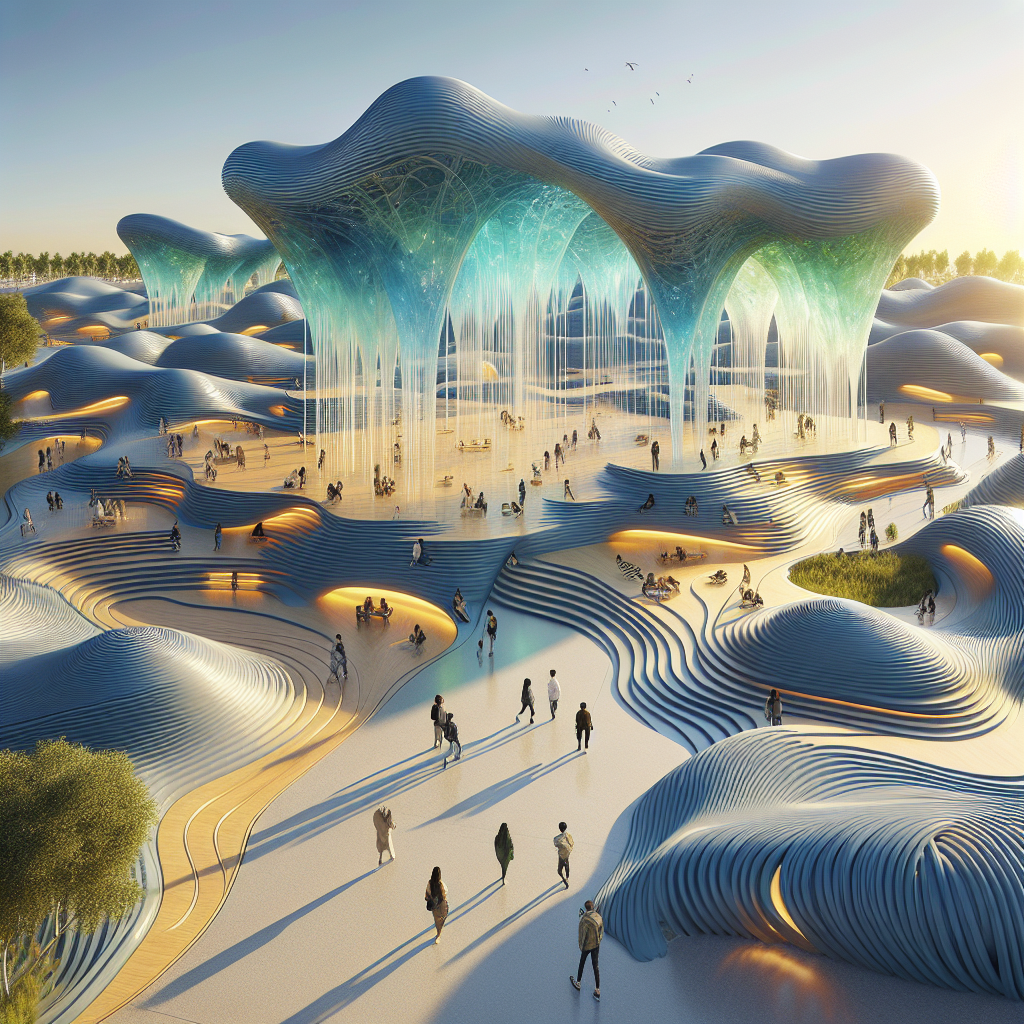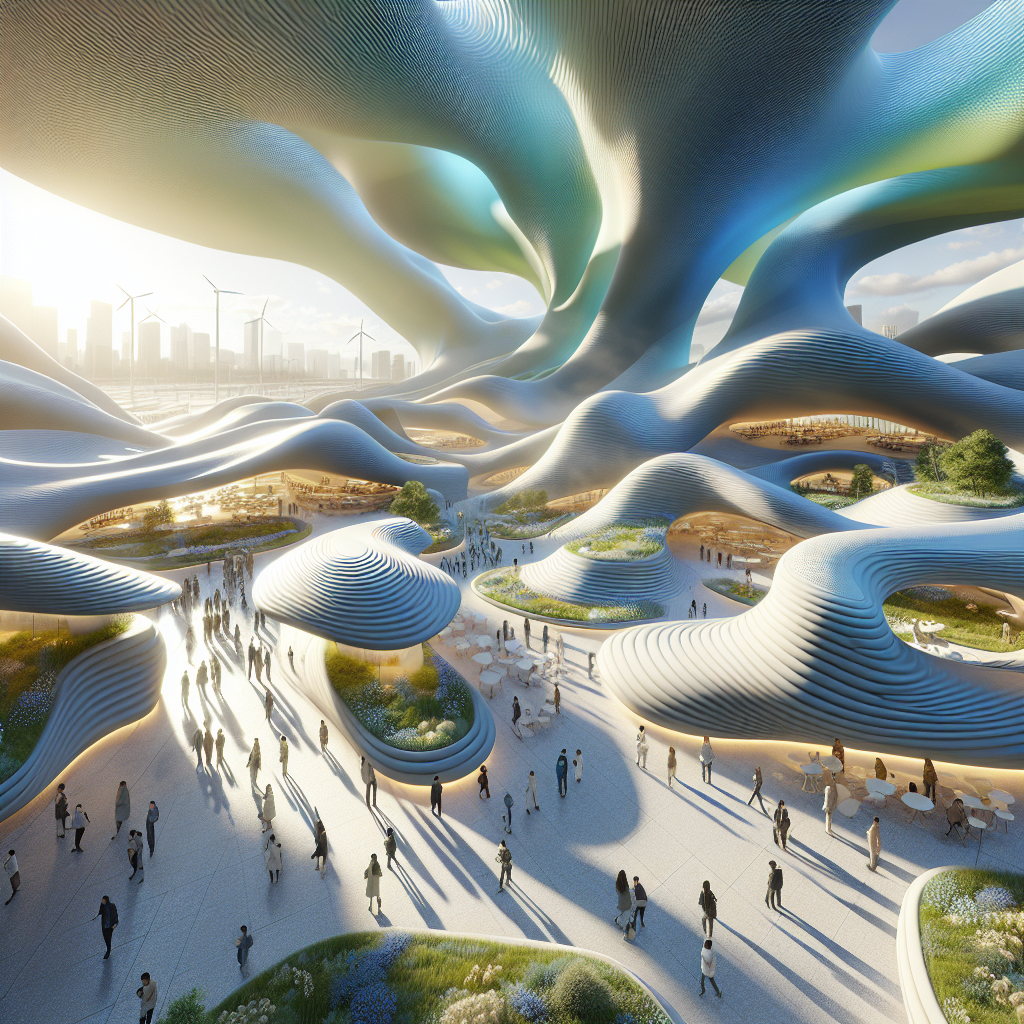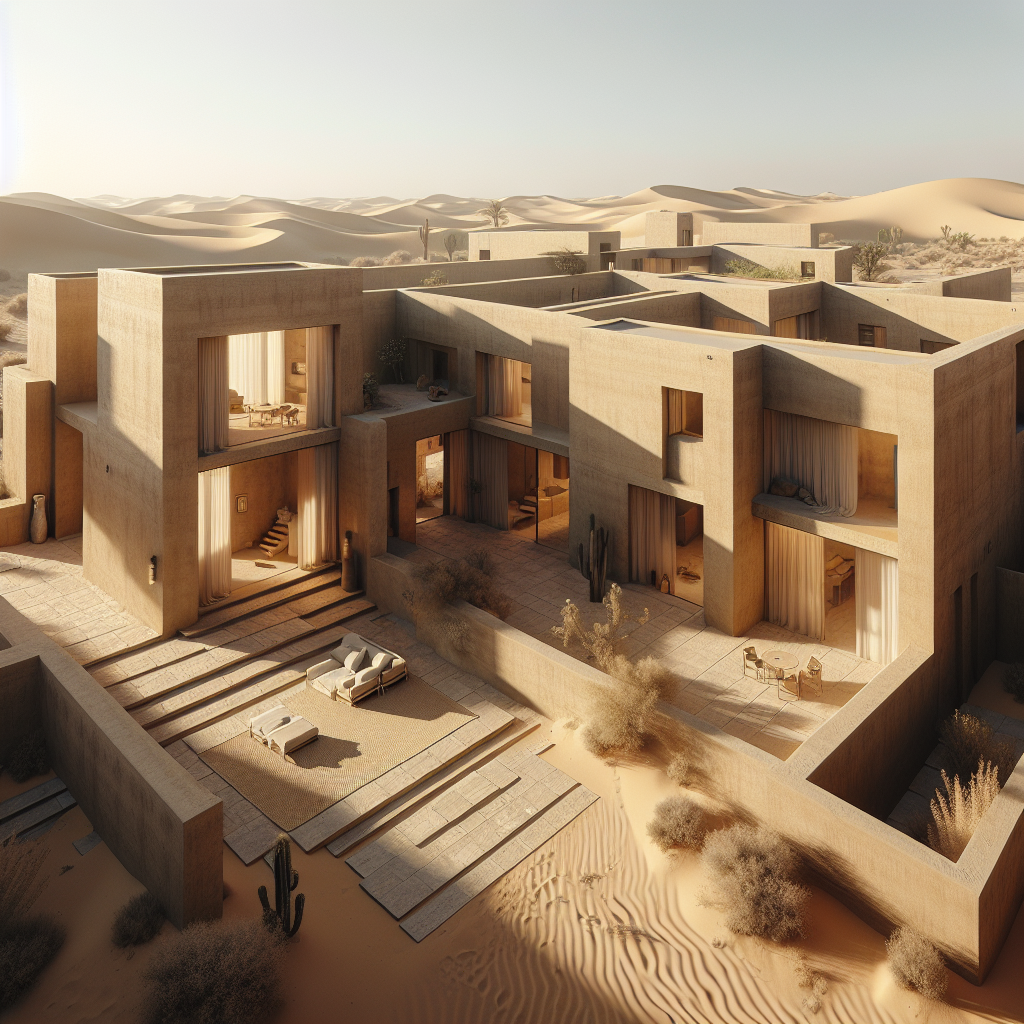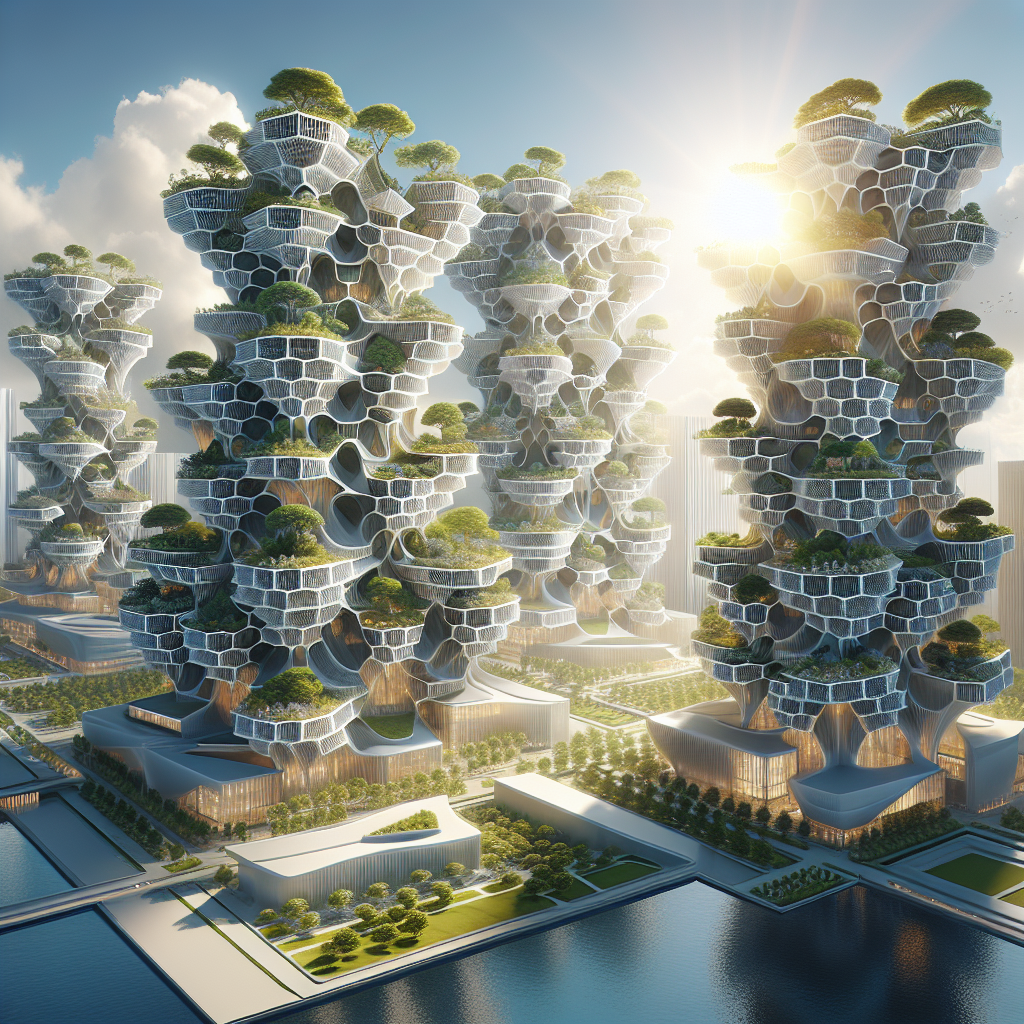Reclaimed plastic dunes: undulating forms shaped from waste
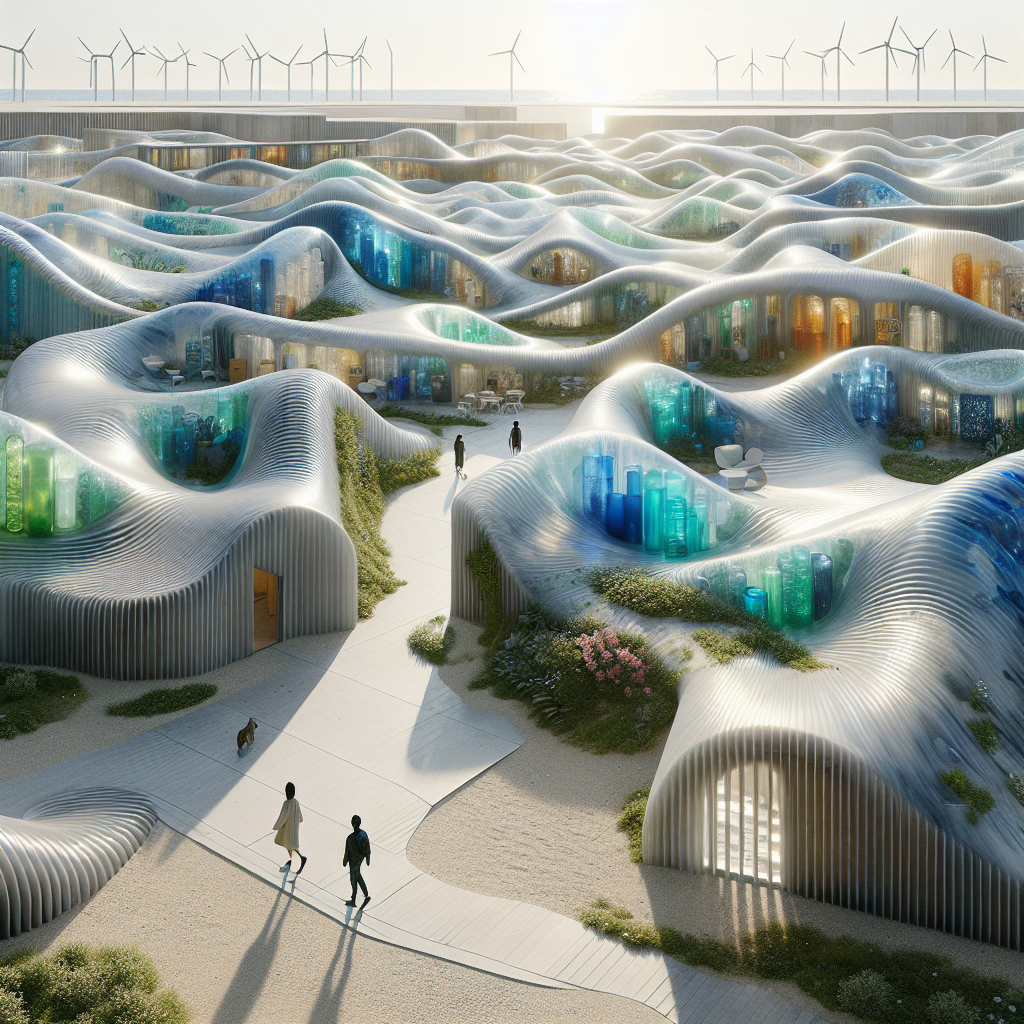
Reclaimed Plastic Dunes: Undulating Forms Shaped from Waste
As the world continues to grapple with the mounting environmental crisis, designers and architects are increasingly turning to innovative solutions to address the overwhelming accumulation of plastic waste. One of the most captivating and visionary trends emerging in the design landscape is the creation of reclaimed plastic dunes, undulating structures crafted entirely from repurposed plastic waste. These sculptural forms not only challenge conventional architectural aesthetics but also embody a powerful message of sustainability and environmental responsibility.
The Plastic Waste Crisis: A Catalyst for Innovation
Plastic pollution has reached alarming proportions, with approximately 300 million tons of plastic waste generated globally each year, according to Wikipedia. The urgency to address this crisis has spurred architects and designers to explore creative ways to transform waste into valuable resources. By repurposing discarded plastics into architectural masterpieces, designers are not only mitigating environmental harm but also redefining the boundaries of contemporary architecture.
One striking example of this innovative approach is the concept of reclaimed plastic dunes. Inspired by the natural forms of sand dunes, these structures are characterized by their flowing, organic shapes, which are achieved through advanced digital fabrication techniques and meticulous craftsmanship. The result is a harmonious blend of aesthetics and sustainability, demonstrating the immense potential of recycled materials in modern design.
Crafting Beauty from Waste: The Art of Reclaimed Plastic Dunes
The creation of reclaimed plastic dunes involves a sophisticated process that begins with the collection and sorting of plastic waste. Designers collaborate closely with recycling facilities to source materials, which are then cleaned, shredded, and melted down into usable forms. Through digital modeling and parametric design techniques, architects meticulously craft the undulating shapes that define these structures, ensuring both structural integrity and visual appeal.
Parametric design, a method that employs algorithms to generate complex forms, plays a crucial role in shaping these dunes. As discussed in our previous article on parametric design, this innovative approach allows architects to explore intricate geometries and create fluid, dynamic structures that echo the natural world.
Once the digital models are finalized, advanced manufacturing techniques such as 3D printing and CNC milling are employed to bring these visions to life. These cutting-edge technologies enable precise fabrication of the complex curves and forms that characterize reclaimed plastic dunes, resulting in stunning architectural installations that captivate and inspire.
Real-World Examples: Pioneering Projects in Reclaimed Plastic Architecture
Across the globe, visionary architects and designers are embracing reclaimed plastic dunes as a means to address environmental challenges and redefine architectural aesthetics. One notable example is the “Plastic Pavilion” project by the Dutch design collective, The New Raw. This innovative installation, located in Thessaloniki, Greece, was created entirely from recycled plastic waste collected from local communities. The pavilion’s undulating forms not only serve as a visually striking landmark but also function as a public space, encouraging community engagement and raising awareness about plastic pollution.
Similarly, the “Superflex” project in Copenhagen, Denmark, showcases the potential of reclaimed plastic dunes in urban environments. This ambitious installation features sculptural seating elements crafted from repurposed plastic waste, providing both functional seating and a powerful visual statement on sustainability. By integrating reclaimed materials into public spaces, designers are fostering greater awareness and encouraging communities to rethink their relationship with waste.
The Intersection of Sustainability and Aesthetics
The rise of reclaimed plastic dunes highlights a broader trend in contemporary architecture: the convergence of sustainability and aesthetics. As explored in our article on biophilic design, incorporating natural forms and materials into architectural projects can significantly enhance human well-being and environmental sustainability. By emulating the organic shapes of sand dunes, reclaimed plastic structures create a sense of harmony and connection with nature, despite their synthetic origins.
Moreover, these innovative designs exemplify the principles of the circular economy, which emphasizes the importance of reducing waste and maximizing resource efficiency. Our previous exploration of zero-waste masterpieces underscores the transformative potential of circular design strategies in architecture. Reclaimed plastic dunes embody this ethos, demonstrating how waste materials can be repurposed into valuable architectural assets, thereby reducing environmental impact and promoting sustainability.
Challenges and Opportunities: Navigating the Future of Reclaimed Plastic Architecture
While reclaimed plastic dunes offer immense potential for sustainable architecture, they also present unique challenges. Ensuring the structural integrity and durability of recycled plastic materials requires rigorous testing and innovation. Additionally, scaling up these projects to larger architectural applications necessitates advancements in manufacturing technologies and recycling infrastructure.
Nevertheless, the opportunities presented by reclaimed plastic architecture are substantial. As designers continue to push the boundaries of innovation, we can anticipate further advancements in material science, digital fabrication, and sustainable design practices. By embracing reclaimed plastic dunes and similar initiatives, architects and designers can play a pivotal role in addressing the global plastic waste crisis and shaping a more sustainable future.
Looking Ahead: The Future of Reclaimed Plastic Dunes
As the reclaimed plastic dunes movement gains momentum, it is clear that this innovative approach holds significant promise for the future of architecture and design. By transforming waste into captivating, functional structures, designers are not only addressing pressing environmental challenges but also redefining our understanding of beauty and sustainability.
Furthermore, the integration of reclaimed plastic dunes into urban landscapes aligns with broader trends in sustainable urban planning and design. Our exploration of sustainable urbanism highlights the importance of incorporating environmentally responsible practices into city planning and development. Reclaimed plastic architecture can serve as a powerful catalyst for change, inspiring communities to embrace sustainability and rethink their relationship with waste.
Ultimately, reclaimed plastic dunes represent a bold and visionary step forward in the quest for sustainable architecture. By harnessing the power of innovation and creativity, designers can transform waste into beauty, shaping a more sustainable and resilient future for generations to come.
For further reading on innovative sustainable design practices, explore our article on biodegradable architecture, which delves into alternative materials and construction methods that minimize environmental impact.

